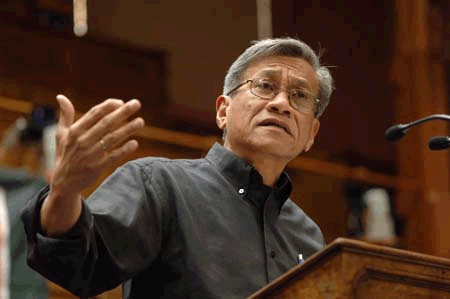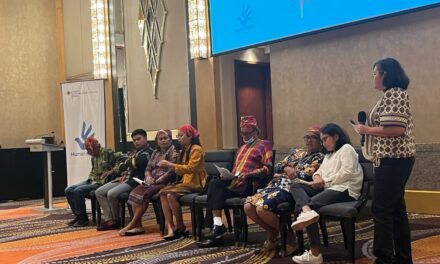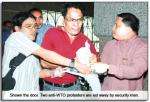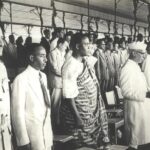(Presentation at trade workshop at Edge Funders Alliance Conference on “Towards an Ecological and Socially Just Transition to the Next Economy,” Berkeley, CA, Apr 30, 2014.)
Radical free trade policies did not begin with the birth of the North American Free Trade Area (NAFTA) in 1994 or the founding of the World Trade Organization (WTO) in 1995. They had been in place in over 90 developing and transitional economies through structural adjustment programs imposed by the World Bank and the International Monetary Fund for over a decade. Trade liberalization was one of the prongs of structural adjustment, along with privatization and deregulation. The result was the rise in poverty rates in Latin America in the 1980’s, the so-called “Lost Decade.” As for Africa, by the end of the 1980’s, it had been rolled back to where it was at the time of decolonization in the 1960’s.
The kind of radical free-market measures the neoliberals pushed on developing countries was exemplified by the Philippines’ cutting down of its tariffs to just 0-5 per cent of the value of imports. When asked to justify why tariffs were being brought so low, the head of the national development agency said something to the effect that if Pinochet’s technocrats in Chile said they could bring down tariffs to 11 per cent, surely we Filipinos could bring ours down to 0! Not surprisingly, over the next decade, a whole range of local manufactures were destabilized and decimated by low-priced imports.
The 1990’s saw the Clinton administration push three grand neoliberal trade projects: NAFTA, WTO, and APEC, or the Asia Pacific Economic Cooperation. NAFTA and APEC were partly conceived as fallback positions in the event the WTO did not come into being. APEC aimed to unite 21 countries in the Eastern and Western Pacific in a trans-Pacific free trade area, while NAFTA was seen as but the first step of a free trade project that would eventually bring the whole Western Hemisphere into a Free Trade Area of the Americas (FTAA).
APEC was scuttled by Japan and a number of other Asian countries, which refused the mandatory liberalization demanded by the United States during the critical Osaka Summit of APEC in 1995. NAFTA came into being, but the grandiose FTAA was torpedoed by Latin American governments led by Venezuela, Brazil, and Argentina during the Miami summit in November 2003.
As for the WTO, the push by the European Union and the US to initiate a new round of trade liberalization just five years after the conclusion of the Uruguay Round fell apart during the Third Ministerial in Seattle in November-December 1999, undone by the resistance of developing countries and some 50,000 protesters on the streets. But the EU and US were undeterred, and at the Fourth Ministerial at Doha in 2001, they employed a carrot and stick srategy to get the developing countries to sign on to a declaration launching the so-called “Doha Development Round,” which had nothing to do with development.
But the experience of being bamboozled in Doha led developing countries to form defensive blocks within the WTO. There was the Group of 20 led by India and Brazil, which pushed a united stand to resist further liberalization of developing countries’ agricultural sectors while the EU and the US continued to massively subsidize theirs. There was the Group of 33, led by Indonesia and the Philippines, which sought to protect the interests of countries with large peasant populations. Then there was the Group of 90, which resisted the push by the EU and the US to include investment, competition policy, government procurement, and trace facilitation within the remit of the WTO, which would have meant bringing more dimensions of economic life under the disciplinary authority of this body. It was members of the Group of 90 that led the walkout during the Fifth Ministerial of the WTO in Cancun in September 2003 that brought about the collapse of that meeting.
After the collapse of the Cancun Ministerial—the second in four years—then US Trade Representative Robert Zoellick made his notorious remarks to the effect that the WTO was composed of “can do” countries and “can’t do countries,” and that the US would “do business” only with the “can do” countries. The US began to rely less on the WTO as a mechanism for trade liberalization and more on bilateral or multilateral free trade agreements (FTAs). By 2012, the US had concluded 21 FTAs. Not wanting to be left behind, the EU had 23 and Japan had 13. There were several key features of these agreements:
– their terms favored the developed countries;
– many imposed intellectual property rights clauses that were even more restrictive than those of the WTO’s TRIPS Agreement;
– they did not touch the highly protected agricultural sector of the developed countries while liberalizing the agriculture of the developing countries;
– they subordinated the environment and the interests of labor to trade liberalization;
-some empowered foreign corporations with strong rights to sue states in investment disputes.
Recently, we have seen the Obama administration resurrect the original APEC free trade project in the form of the Trans-Pacific Partnership (TPP), which would unite 13 countries bordering the Pacific in a free trade area. This agreement is being negotiated in secret because, as former US Trade Representative Ron Kirk has said, many of the provisions of the TPP are so unpopular that people would reject it if they were made public in transparent negotiations. The proceedings of some negotiations have been leaked, however, and these reveal that the environmental protection provisions are very weak, the US is pushing for tough intellectual property provisions, and corporate investors would be given great leeway to sue states in cases of conflict over contracts.
There is, however, one very important difference between the TPP and APEC: the TPP does not include China. In fact, it is meant to contain China. It is the economic counterpart of President Obama’s “Pivot to Asia” military strategy.
Will the TPP succeed? President Obama recently left Japan empty-handed because his negotiators could not get the Japanese to agree to many of US trade demands. The TPP facing stiff opposition in the US Congress, especially from Obama’s partymates in the Democratic Party.
Just a few comments on where we should be headed:
– We should support regional economic agreements like the Bolivarian Alternative for the Americas or ALBA, which makes economic cooperation and development, not free trade, the centerpiece of economic relations among countries.
– While it had its flaws, the GATT system (General Agreement on Tariffs and Trade) left a lot of “development space” for developing countries, and if we are to have a multilateral framework, we should probably return to something like GATT instead of the neoliberal WTO, which eliminates practically all development space. Even better yet is a reinvigorated United Nations Conference on Trade and Development (UNCTAD), which has among its central principles the “special and differential treatment of developing countries.”
– Reform of the global trading system must go hand in hand with developing countries’ junking the export-oriented strategy of development that the World Bank and neoliberal technocrats pushed on them, which has made them very vulnerable to global trends because it has made export markets rather than the domestic economy the center of gravity of the economy.
Thank you.









